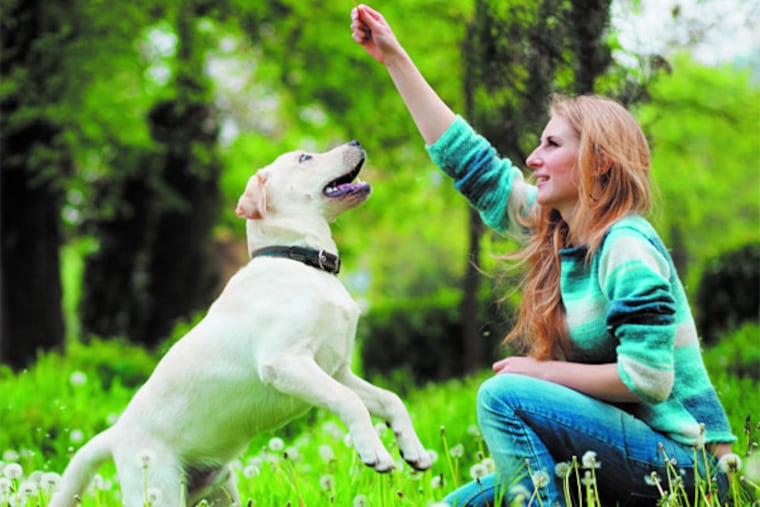Let your pet be your date all the new year
Helping your cat or dog change his life for the better has benefits for both of you.

GOT YOUR New Year's resolutions ready yet? Yeah, we don't either. A good place to start, though, is with your pet. Helping your cat or dog change his life for the better has benefits for both of you. A healthier, happier pet not only puts less pressure on your wallet but also brings more smiles to your face multiple times a day. Here are some ideas to get you started.
* Brush those teeth. Keeping your pet's pearly whites clean isn't just about improving his breath, although that is definitely a bonus. Brushing your pet's teeth several times a week (yes, cats, too) prevents the buildup of plaque and tartar, which trap bacteria and eventually cause periodontal disease. Brushing reduces the number of bacteria circulating through your pet's system and helps ensure that he keeps more of his teeth into old age. Dentures aren't an option for him, after all.
* Watch his weight. Does your dog or cat look like a plump cocktail wiener on toothpicks? That's not normal or healthy. Use your eyes and hands to determine if Roxy or Snowball could stand to lose a few pounds. When you look at a pet from the side, you should see an abdomen that's tucked up, not hanging low. As you look down at him, you should see an hourglass figure, with the waist curving inward just before the hind legs. When you pet your dog or cat on the side or back, you should be able to feel the ribs or spinal bumps, but not see them.
* Measure your pet's food. This is one of the easiest ways to help a dog or cat slim down. Instead of leaving food out all the time, give a set amount once or twice a day. Use the recommendation on the bag or can as a starting point, but recognize that individual animals have different metabolisms and may need more or less than the suggested amount. Ask your veterinarian's advice about how much your pet should be eating, and don't be afraid to experiment.
* Start an exercise plan. Getting off the couch and on the move is good for both of you. Take a brisk walk or play a rousing game of fetch. For cats, dangle or pull a fishing-pole toy for them to chase. Wriggle the pole a little so the object on the end of the string resembles a bug or other critter scurrying along the ground. Your dog may enjoy this kind of play, too, as long as you don't let him know he's chasing a cat toy.
Better yet, have your dog or cat "work" for his meals by hiding small amounts of food around the house (this works only if you have a single pet), placing food up high - on a washer or dryer, for instance - so that cats have to make an effort to get to it, or placing kibble in puzzle toys that pets must manipulate to make the food come out. These are all good ways to exercise your furry predator's body and brain and make his day more interesting, especially if you're off at work and he has nothing else to do.
* Make time for him. When your pet nudges your hand or bumps you with his head, don't just automatically hand him a treat. Instead, reward him with a scratch between the ears or a few minutes of play. You'll both be better for it.